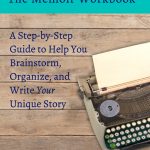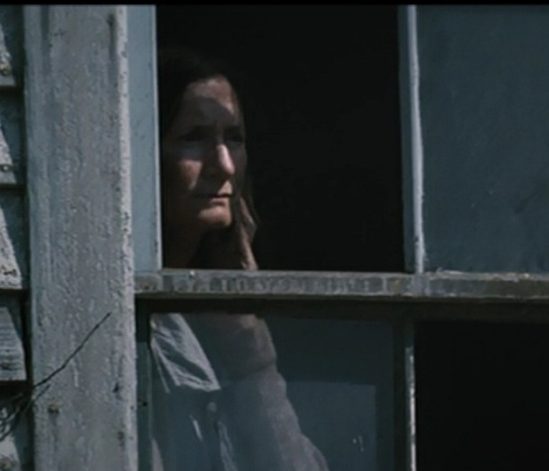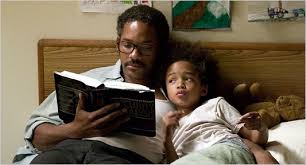How to Transform Memories into Memoir
Today’s guest post is by Kathleen Pooler.
“It is the complicated, abiding pleasure, to paraphrase Ralph Waldo Emerson, of finding the universal thread that connects us to the rest of humanity, and, by doing so, turns our small, personal sorrows and individual tragedies into art,” says Dani Shapiro from The New Yorker.
Finding a compelling story amid the rubble of memories and events is one of the biggest challenge of a memoirist. But the work goes beyond just identifying and writing.
Excavating the emotional terrain is part of the work of sifting through memories so you can develop a compelling “slice of life” story with a takeaway. In memoir, these “slices of life” moments or defining moments make up a collection of scenes in your memoir.
In a COVID-19 era, many memoirists are finding it increasingly challenging to stay focused. Perhaps starting with that one memory that triggers emotions might be a good place to start.
So how does one take a difficult memory and transform it into a scene? Read on for three tips to help you transform those compelling memories into memoir.
Tip #1: Start with Your Heart
In the early stages of writing my memoirs, I kept digging and downloading moments when time stood still and hope seemed distant. Moments that left me sobbing when he kept drinking, and I knew deep down that my adolescent son needed professional help. Moments when I felt despair about his life and where his drinking could lead him. I was afraid he would die while also I felt helpless about what I could do to help him.
Instead of running away from the emotion, I stayed with it as long as I could. The story would always be there the next day, and so long as I had the comradery of my writing group and their thoughtful feedback, I didn’t feel so alone. They forced me to keep facing my pain and digging deeper.
One important piece of advice I’d learn along the way is that if a scene doesn’t move you, it won’t move the reader. Helen Keller said it best: “The best and most beautiful things in the world cannot be seen or even touched. They must be felt with the heart.” I would take her words to heart each time I braved through another page.
Tip #2: Let Go of the Need for Structure
At those early stages, the writing felt raw and unpolished, and while there was no emerging structure, I didn’t mind so much so long as I could still feel my way through those moments with my heart.
Often memoirists forget this important piece of advice: don’t let your inner sense of structure kill the emotion, the heart of your creative soul. Engaging structure early on, such as making sure you have the right time markers and you used the right verb tense, interferes in the early stage of memoir writing that is necessary for going deep.
I call this “the agony versus the ecstasy” stage when the internal story is begging to be released but in many times we choose to ignore those nudges (see tip #3). It helps to visualize this image: see yourself standing at the edge of a deep, dark abyss knowing that the treasure you need to unearth is on the other side. What can you do to cross that emotional rocky terrain?
To unearth these treasures, I had to cross the other side. This is where trusting the process allowed me to make progress.
As Lia Mack said in a recent post, “This is the Reason to Use Raw Emotion in Your Writing” on Rachel Thompson’s blog: “Your guts are the source from which the rawness of yourself resides.”
Yes, writing from the heart takes guts. And it also takes courage to be vulnerable and bare your soul, but it’s the only way the reader will resonate. The heart cannot lie.
Tip #3: Listen for the Nudges
Following your nudges is another way to get unstuck as a writer. You probably know what I’m talking about—those voices that won’t let go or let you rest, including those you might hear in the early morning hours.
Other ways nudges can appear:
- A haunting image or sight. Tammy Delatorre says in her piece “How I Won My Third Essay Contest” for Jane Friedman, “Be willing to be haunted.” I love that wording because sometimes the feeling of being haunted can be deeply unsettling and scary, and unless we are willing to be haunted we might not want to unearth a gem.
- A voice. Sometimes we can’t stop the voices from people who have impacted us, like family members, and typically these voices get triggered at random and at unexpected moments when we are not on our guard.
At this early and vulnerable stage, some writers find it particularly helpful to write in third-person point of view (POV) to get some distance and objectivity as they feel their way through to their character’s heart. Example: “She couldn’t wait to tell her mother about ….”
Finally I’d like to share a mini checklist to ask yourself about the role of the memory in the overall narrative.
1) Why did I choose this particular memory? Start by listing memories that stand out because of the impact they had on your life—happy and sad. Moments when life as you knew it changed. Ultimately you’ll need to decide which memory works well enough in the timeline to also show character growth and transformation.
2) How will I tell this particular scene? First Person? Third Person? What sensory details will I include—sight, sound, touch, smell and taste—to bring the reader into the scene?
3) How will my character grow and transform? In memoir, the narrator, protagonist, and character are the same.
Ultimately, when you have a collection of scenes, you can start tackling how the scenes support a larger narrative and theme.
But, for now, let the writing reveal the answers you need—the ones closest to your heart.
Getting those initial memories out of my head and onto the page jumpstarted my second memoir, Just the Way He Walked: A Mother’s Story of Healing and Hope. One of the first memories that shattered me was seeing my teenaged son drunk for the first time.
In writing about this deeply vulnerable moment, I was able to build momentum despite the discomfort of digging through the memories of coping with my addicted son, my cancer, my role as a nurse, and finally my faith.
Once I felt safe doing the hard work, I allowed myself to “research” these memories. Thanks to journaling, old photos, interviewing family members, I was able to understand the “gist” of what happened as a way to validate memories and make sure I had the correct facts and dates.
With my second memoir, I was able to take my research to the next level, and I joined a Facebook group called Parents of Children Struggling with Drugs/Alcohol. There’s great support and comfort connecting with various online communities and individuals who are going through similar experiences.
This helped me find my own words to share the reality of being the mother of an addicted child. But not everyone may feel compelled to choose this route—sometimes writers may need to protect themselves before sharing themselves with an outside audience.
This brings me to my final point: memoir writing can be a daunting process. It takes courage and persistence to excavate painful memories enough to want to make sense of them.
Be kind to yourself. Allow yourself to set your manuscript aside until you feel emotionally ready to revisit it. When you get to the other side and find that you have healed and transformed, then you’ll know you have a memoir that will help readers connect with their own stories.
 Kathleen Pooler is a retired family nurse practitioner and author of the memoir Ever Faithful to His Lead: My Journey Away From Emotional Abuse and the sequel Just the Way He Walked: A Mother’s Story of Healing and Hope. Kathleen lives with her husband Wayne in eastern New York and blogs weekly at Memoir Writer’s Journey. She can also be found on: Twitter, Facebook, Instagram, and Pinterest.
Kathleen Pooler is a retired family nurse practitioner and author of the memoir Ever Faithful to His Lead: My Journey Away From Emotional Abuse and the sequel Just the Way He Walked: A Mother’s Story of Healing and Hope. Kathleen lives with her husband Wayne in eastern New York and blogs weekly at Memoir Writer’s Journey. She can also be found on: Twitter, Facebook, Instagram, and Pinterest.
Featured Photo by Jon Tyson on Unsplash
 Learn how to write a memoir so that your story comes to life!
Learn how to write a memoir so that your story comes to life!
The Memoir Workbook takes you through the process, one step at a time, to help you write a powerful memoir with sensory detail, dialogue, and visually rich imagery. This book holds your hand and helps you structure your story and organize your memories with solid structure.
You can buy The Memoir Workbook in print (only) on Amazon HERE.












Kathy, two “wows” – to all the valuable research here and to your personal story of getting your second memoir to publication and beyond. I had a front-row seat to your daunting physical challenges this past year. While a less committed writer may have given in to the impulse to curl up and die, you soldiered through and have found creative ways to market your book.
I love all the quotes, beginning with Dani Shapiro’s. Here’s one more: “Your effort to turn your memories into a coherent whole is both a literary endeavor (you’re writing a book) and a psychological one (you’re reconstructing and repairing part of your own psyche).” ~ Jerry Waxler
Thank you, Susanne, for featuring this amazing author today. 🙂
How nice to see you here, Marian. Memoir writing is such a daunting process ( as Jerry Waxler encapsulates on his quote). I’m so happy we’ve been able to accompany each other along the way. Your memoir, Mennonite Daughter, is a treasure trove of family memories turned into memoir. Keep shining on, my friend. Thanks so much for stopping by.